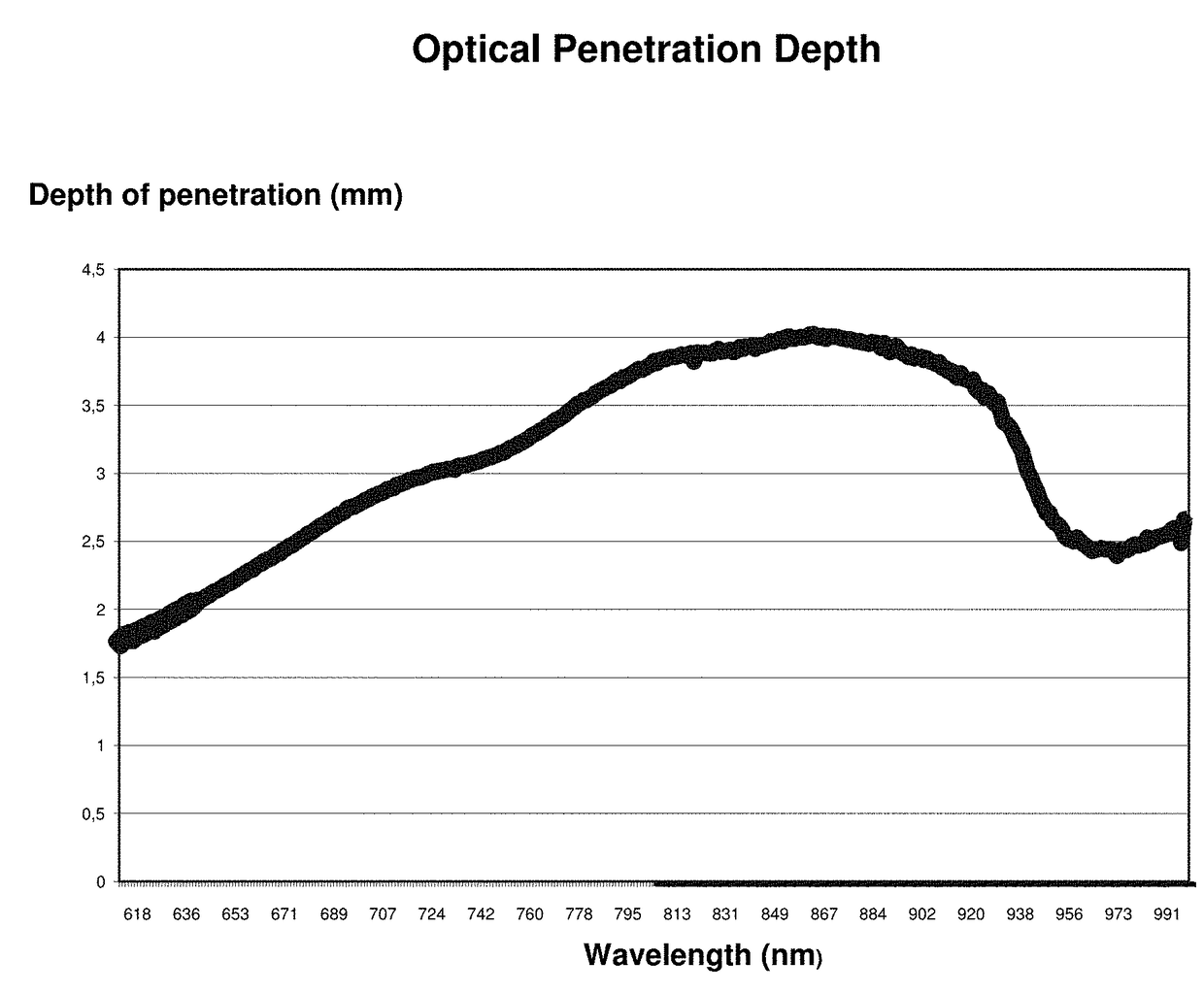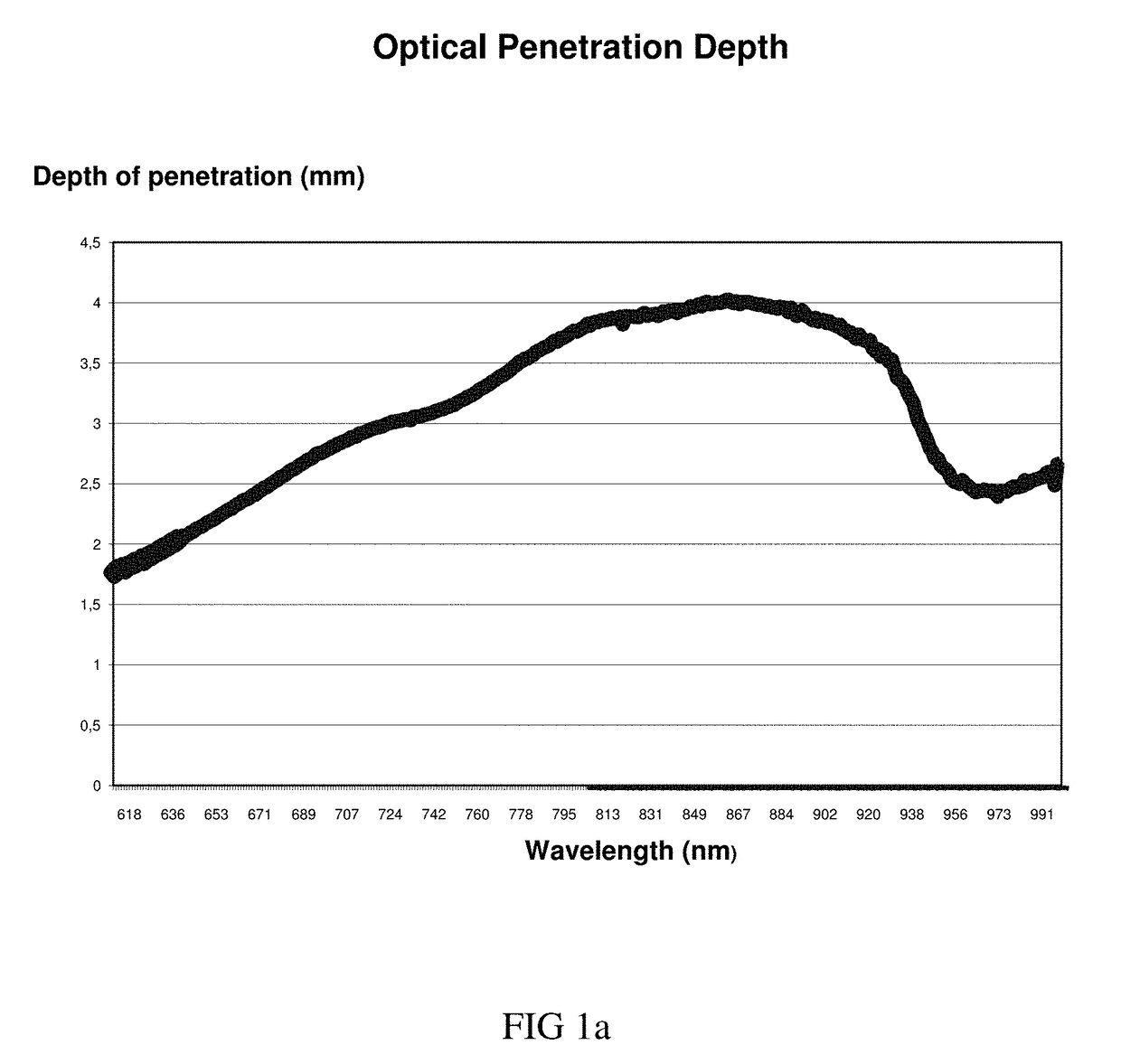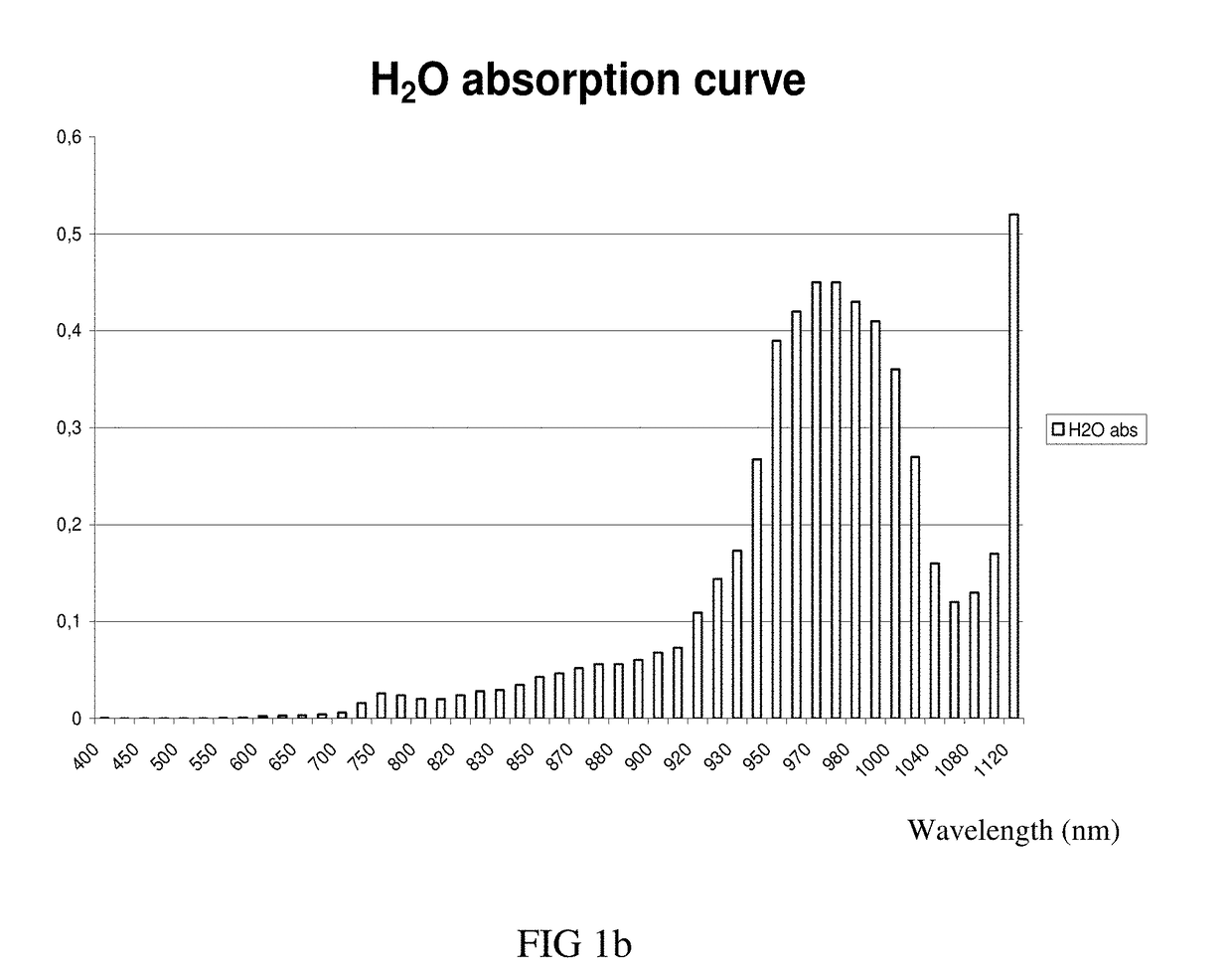Method for the treatment of skin tissues
- Summary
- Abstract
- Description
- Claims
- Application Information
AI Technical Summary
Benefits of technology
Problems solved by technology
Method used
Image
Examples
example 1
Radiant IR Increases Skin Temperature and Opens Skin Pores (Anterior Arm)
[0113]A thermocouple type-T probe (Omega inc.) was inserted at the papillary junction of the skin (D-E (dermo-epidermal) junction) of the anterior arm of a subject to allow real time measurements of skin temperature during IR exposure. Preliminary testing performed on an ex vivo animal model had shown a significant increase in temperature using radiation of 870 nm, at 80 mW / cm2, with a source 3 cm away from the target area for exposures up to 30 minutes (resulting in a fluence of up to 144 J / cm2) (data not shown). The human model (in vivo) testing described herein considers superior tissue mass (bulk effect) and inherent physiological body temperature management mechanisms (i.e. blood capillaries heat dissipation) that could influence the temperature variation monitored by the probe during IR exposure.
[0114]Two sets of parameters were investigated: 870 nm at 200 mW / cm2 (High Irradiance) and 970 nm at 50 mW / cm2 ...
example 2
Radiant IR Skin Preparation: Temperature and Sebum Monitoring
[0115]The treatment area, the middle upper back, was cleaned with a mild soap 60 min prior to the experiment. Sebum measurement was assessed with a dermaspectrometer and temperature was monitored with a thermocouple (Omega inc.). Then, 15 min of 870 nm IR light, delivered 117 J, at a 2.5 cm treatment distance (130 mW / cm2, Mode: continuous wave (CW).). Sebum readings using a sebumeter SM815 (CK electronic GmbH) were taken prior to irradiation (T0), after 15 min irradiation time (T15), right after the acetone scrub (Ta), after the second 15 min irradiation time (T215), and at 30 min cool off time (Tc30). The following readings were measured on the upper back: T0: 8; T15: 13; Tc30: 11. Periodic epidermal temperature was monitored every minute during IR exposure using a type T thermocouple firmly resting on the epidermis, in the middle of the treatment area on the upper back. Temperature was monitored every minute. During this...
example 3
IR Skin Preparation Leads to Temperature Increase (Middle Upper Back) Enhancing PDT Treatment Outcome in an Acne Patient
[0116]A treatment was carried on a 32-year-old female suffering from mild inflammatory acne in the upper back. Briefly, the treatment area was cleaned with a mild soap and an acetone scrub was performed. The IR-device (870 nm, 130 mW / cm2, Mode: CW) was placed over the treatment area (middle upper back). A distance gauge maintained the treatment distance at 2.5 cm during the entire procedure. Then, the treatment area was exposed to the IR LED device for 15 min and 177 J were delivered. After the radiant IR skin preparation, the treatment area and the photosensitizer, kept at room temperature, was applied for 90 min. Then, 5-aminolevulinic acid (Levulan™ Kerastick™) was activated by red LED light delivered by the LumiPhase-R (Opusmed, Canada), for 20 min. Finally, a 5 min exposure at 405 nm LED 30 mW / cm2) was performed. Her back was then washed-off and the patient wa...
PUM
 Login to View More
Login to View More Abstract
Description
Claims
Application Information
 Login to View More
Login to View More - R&D
- Intellectual Property
- Life Sciences
- Materials
- Tech Scout
- Unparalleled Data Quality
- Higher Quality Content
- 60% Fewer Hallucinations
Browse by: Latest US Patents, China's latest patents, Technical Efficacy Thesaurus, Application Domain, Technology Topic, Popular Technical Reports.
© 2025 PatSnap. All rights reserved.Legal|Privacy policy|Modern Slavery Act Transparency Statement|Sitemap|About US| Contact US: help@patsnap.com



